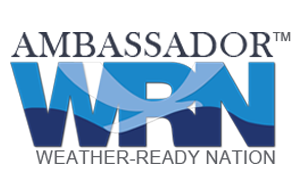Shelter in Place / Evacuation Information
During some disasters, evacuating your home or business can put you at a risk than staying put. IN thse situations, you should Shelter-in-Place.
What is Shelter-in-Place?
Shelter-in-Place means to take immediate shelter indoors, whether in your home, school, business, or public building.
It also may include precautions, such as turning off fans, air conditioning, and forced air heating systems during a contamination emergency. This action could significantly reduce the possibility of inside air contamination.
When Should I Shelter-in-Place?
Shelter-in-Place may be recommended when there is little time to react to an incident and it would be more dangerous to be outside.
If you are told to Shelter-In-Place by government officials, do so immediately. Make sure your family and pets are indoors.
Stay calm and immediately follow the protective measures recommended by your local government officials and emergency managers. You will be told when it is safe to resume normal activities.
Evacuation occurs only when a serious threat to public safety exists. If you are told to evacuate by government officials, do so immediately.
Be Prepared
- Plan several different locations where you could stay during an evacuation, such as the home of family or friends.
- Know the evacuation plans for important locations (such as work or school).
- Hotels fill up quickly during evacuations. Call ahead and make a reservation before you leave.
- Keep phone numbers and maps for potential evacuation locations.
- Wear sturdy shoes and appropriate clothing.
- Take your Go Bag.
- Lock your house.
- Leave a note inside your house stating when you left and where you are going. This will provide needed information to law enforcement if they enter your home.
- Use authorized routes.
- When you are safe, call your out-of-area contact and let him or her know where you are.
If you need to leave your home, be ready to go as quickly as possible. Having a Go Bag in an accessible place ensures that you and your family are prepared for whatever situation arises.
Go Bag Guidelines
- Each member of your household should have his or her own Go Bag.
- Go Bags should be easy to carry and sturdy.
- Go Bags should be stored in an easily accessible location.
- Ideally, you should keep a Go Bag at your home, in your car, and at work.
- Go Bags should be prepared for any time of year.
- Go Bags should be updated every six months.
Go Bag List
- Bottled water
- Non-perishable food
- Manual can opener
- Flashlight
- Battery-operated AM/FM Radio
- Extra batteries (necessary types)
- Pocketknife
- Whistle
- Extra house and car keys
- Blanket
- Raingear
- Hat
- Comfortable, sturdy shoes
- Warm clothes
- Prescription medication for a week, with copies of your prescriptions
- List of doctor(s) and phone numbers
- Small first-aid kit
- Extra pair of glasses or contact lenses
- Extra hearing aid(s) and batteries
- Toilet paper
- Plastic garbage bags
- Soap
- Toothbrush and toothpaste
- Feminine hygiene products
- Copy of your communications plan
- Regional map
- Paper, pens, and tape – in case you need to leave a message somewhere
- Dust mask
- Cash – preferably in small amounts
- Coins for pay phones
- Credit and debit cards
- Copies of important documents in a waterproof container (IDs, insurance information, proof of address, passports, etc.)
- Recent family photo for identification purposes – make sure everyone’s face can be seen clearly
- Items for members of your family, especially children, seniors or people with functional needs, and pets.
For more preparedness information visit www.ready.illinoi.gov.






